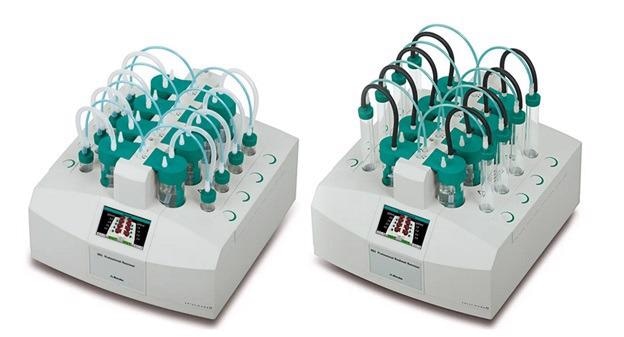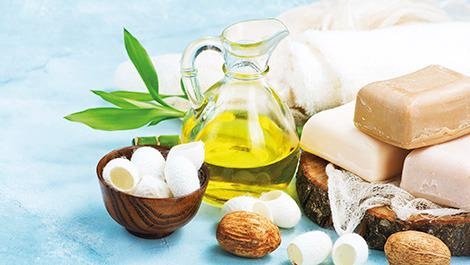Rancidity is the process through which oils and fats become partially or completely oxidized after exposure to moisture, air or even light. With the 892 Rancimat and the 893 Biodiesel Rancimat, Metrohm offers two instruments models for the simple and reliable determination of the oxidation stability of natural fats and oils and of biodiesel, respectively.
The method, also known as the Rancimat method or Rancimat test, is based on a simple principle of reaction kinetics, according to which the rate of a chemical reaction (here the oxidation of fatty acids) can be accelerated by increasing the temperature.

The 892 Rancimat (L) and the 893 Biodiesel Rancimat (R). Image Credit: Metrohm Middle East FZC
How Does it Work?
During the determination, a stream of air is passed through the sample at a constant temperature (e.g. 110 °C according to standard EN 14214 for biodiesel). Any oxidation products that develop are transferred by the air stream to a measuring vessel, where they are detected by the change in conductivity of an absorption solution. In addition to the temperature (both the accuracy and stability of which are guaranteed by the Rancimat system), the preparation of the measurement and the condition of the accessories also influence the quality and reproducibility of the results. This article compiles some practical experience in using the Rancimat to help you.

Image Credit: Metrohm Middle East FZC
Quality Control of Natural Fats and Oils in Cosmetics
Vegetable oils and fats in natural cosmetics age and get rancid over time due to oxidation. Their current quality can be determined with classical fat parameters such as the acid number or peroxide value. But what about their future quality?
The Rancimat test provides the answers: In this test, the oxidation of the sample is accelerated and the induction time of the oxidation is determined. The induction time is a parameter of the oxidation stability of the sample that indicates how long its quality will remain stable. In effect, you can also estimate the shelf life for the product.
With the Rancimat test, manufacturers of natural oils and fats can assess the quality of the end products and decide if further actions, such as adding antioxidants, are needed to ensure their stability.
Benefits of the Rancimat Test
- Reliable quality control of natural oils and fats
The Rancimat test determines how stable the end product is, indicating when the oil or fat used will become rancid.
- Compliance with AOCS Cd 12b-92 and ISO 6886
The Rancimat test is compliant with several standards including AOCS Cd 12b-92 and ISO 6886.
- Simple and safe measurements with 892 Professional Rancimat
No additional reagents are needed for the test, just ultrapure water, making it simple and easy to use at the lab.

 Download the free Rancimat White Paper here!
Download the free Rancimat White Paper here!

This information has been sourced, reviewed and adapted from materials provided by Metrohm Middle East FZC.
For more information on this source, please visit Metrohm Middle East FZC.